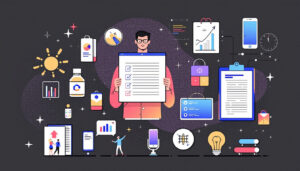Challenges Subscription models for digital goods have moved to the forefront of technology and business strategy after the rapid shift online post-pandemic. As more companies turn to digital distribution, these models have become a key method for delivering software, tools, content, and professional resources. The year 2025 brings new urgency, as changes in user expectations and regulations push IT professionals, developers, electronics companies, and business leaders to adjust their offerings.
Growing market competition, tighter budgets, and the demand for flexibility mean subscription models are no longer just an option—they are a necessity. Understanding what is driving these shifts, and how ongoing trends are shaping them, is essential for anyone responsible for digital products or services. This post provides a focused analysis of what’s changing, where the main challenges lie, and what you need to watch in the coming year.
The Evolution of Subscription Models for Digital Goods
Minimalist flatlay featuring a smartphone with a subscribe screen, surrounded by delicate dried flowers.  Photo by alleksana
Photo by alleksana
The subscription model has reshaped how organizations and consumers access digital software, media, and services. Before, a one-time purchase gave users lifelong access to products, from boxed software to CDs and e-books. Today, recurring subscriptions fuel a growing digital industry that prizes flexible access over possession. Understanding these changes helps professionals make informed decisions and anticipate what is coming next.
From Ownership to Access: Major Shifts in Digital Consumption
Digital goods are no longer treated as permanent properties. Instead, users now prioritize continual access, upgrades, and new releases. This transition has been significant across several digital sectors:
- Software: Many software tools, once bought outright, now require a monthly or yearly fee for continued use and updates.
- Media: Streaming services displaced traditional media ownership, making unlimited libraries of music, video, and books available on demand.
- Professional Resources: Digital workspaces and tools increasingly bundle features, integrations, and support into subscription packages instead of permanent licenses.
This change has given end-users more control and flexibility. They can choose subscriptions based on current need or budget without long-term commitment. Businesses, in turn, benefit from predictable revenue streams and improved customer engagement.
For those interested in the background of this business approach, the article “A Subscription Business Model Timeline” traces the history and outlines how these models rose alongside modern computing.
Key Drivers of Change: Cloud, AI, and User Experience
Three main catalysts have fueled the rapid growth of subscription models for digital goods:
- Cloud Infrastructure: The shift to cloud-based delivery made it easier for developers to update products, patch security issues, and expand features without requiring new installations.
- AI and Automation: Continuous improvements in artificial intelligence have personalized the user experience and automated billing, usage analytics, and support. This allows platforms to offer adaptive services that better meet evolving expectations.
- Focus on Experience: The modern user expects seamless onboarding, user-friendly interfaces, and regular enhancements. Subscription models encourage ongoing innovation, as companies must work to retain subscribers month after month.
These factors work together, fostering faster updates, improved reliability, and new opportunities for service providers and users.
For an external perspective on the early development of these models, “The Origin Of The Subscription Model” provides insights into historic patterns leading to today’s digital subscriptions.
Case Studies: Successful Subscription-Based Digital Goods
Several examples show how subscription models have transformed digital markets and supported innovation:
- Adobe Creative Cloud: Adobe moved from one-time software purchases to a cloud-based suite. Users now get regular updates, cloud storage, and support as part of their subscription.
- Microsoft 365: Offering its suite of productivity tools as a subscription, Microsoft aligns with changing work patterns, providing regular updates and cross-device accessibility.
- Spotify and Netflix: Both platforms used subscription access to build vast user bases, expanding global reach and constantly refreshing content libraries to maintain engagement.
- Figma: In the design software sector, Figma’s subscription approach allows teams to collaborate in real time with updates, plugins, and integrations included as part of ongoing service.
Each of these companies adapted to shifting user demands and technology trends. They illustrate how recurring billing models enhance customer experiences and support business stability.
Shaping effective strategies for subscription offerings requires understanding the history, drivers, and studious examples outlined above. For a deeper look at how these changes influence digital business and product management, follow up with dedicated research and ongoing market analyses.
Emerging Subscription Trends for Digital Goods in 2025
The competitive field for digital goods in 2025 is marked by a focus on customer value, increased flexibility, and smarter offerings. Subscription providers are testing granular pricing, advanced personalization, and modular packages to retain both B2B and B2C clients. These trends will shape how organizations plan, monetize, and delivery digital solutions in the year ahead.
Micro-Subscriptions and Pay-as-You-Go Models
A growing number of companies are introducing micro-subscription and pay-as-you-go models. These approaches break away from rigid monthly or annual billing structures. They offer a level of flexibility that appeals to customers who want short-term access or only intend to use specific features.
- Micro-subscriptions allow users to purchase hour-long, daily, or single-feature access. Practical for educational tools, media, and niche digital services, this model reduces commitment risk and can support spur-of-the-moment purchases.
- Pay-as-you-go models, often backed by metered usage, are gaining traction in SaaS, API services, and professional platforms. Customers pay only for what they use. This appeals to businesses monitoring budgets or companies scaling resources up and down with project cycles.
These smaller, usage-based offers align well with uncertain economic conditions and enterprise needs for agile spending. According to “Subscription growth trends to watch in 2025”, metered pricing will remain a preferred strategy in enterprise SaaS, streaming, and specialized digital goods.
Bundles and Modular Offerings in Digital Services
The next wave in subscriptions emphasizes bundles and modular pricing. Instead of forcing clients to buy an entire suite of services, providers now unbundle features and allow buyers to construct their own packages.
 Photo by Mikael Blomkvist
Photo by Mikael Blomkvist
- Bundles let companies group related services at a value rate, appealing to clients who want more for less. For example, design firms might provide access to image libraries, editing tools, and export functions as a bundle, with optional add-ons.
- Modular subscriptions allow both businesses and consumers to tailor what they buy. This might include selecting parts of a professional toolkit or customizing an integration suite, keeping costs linked directly to need and use.
For service providers, bundles and modular setups help control churn by enticing clients to experiment with more features. They also make upselling easier. In the B2B sector, companies can adjust their package as their business grows, reducing friction over time. The 2025 State of Subscriptions report notes that bundled and modular solutions often lead to higher retention and better upsell rates, even during budget reviews. For further analysis, you may explore the “2025 State of Subscriptions: An In-depth Analysis”.
Personalization Through Data and Artificial Intelligence
Advanced data analytics and artificial intelligence are setting new standards in subscription personalization for 2025. Businesses of every size are using these tools to increase retention and revenue through individualized services.
- Personalized recommendations powered by AI now suggest relevant features, upgrades, or content. Streaming media, professional SaaS, and e-learning platforms are using predictive analytics to show what users want before they ask.
- Subscription platforms track usage patterns, engagement frequency, and cancellation risk, adapting promotions, pricing, and communication to suit the individual.
- AI-driven dynamic pricing offers promotions or discounts based on demand, loyalty, or user activity. This keeps subscriptions attractive and competitive.
These innovations go beyond simple email outreach. They let platforms trigger timely nudges, add relevant upgrades, and limit churn with smart interventions. For B2B clients, AI learns from team usage patterns, offering relevant add-ons or proactive support.
The transition toward deep personalization brings measurable results: higher renewal rates, stronger upselling, and lower cancellation rates. Industry experts discuss how AI will become a core differentiator in subscription offerings throughout 2025, as seen in “2025 Trends in Subscription Businesses”.
Personalization and flexibility will define competitiveness for digital goods providers as 2025 unfolds. These trends represent the new baseline that both established firms and new entrants must address to stay relevant.
Challenges Facing Subscription Models in 2025
Subscription-based digital goods continue to attract demand, but sustaining growth will become increasingly complex. Providers must address user churn, adjust to changing laws, secure transactions, and maintain customer trust. This section highlights the three main challenges facing these models as 2025 approaches.
Combatting Churn and Increasing Retention
Churn remains the primary challenge for subscription businesses. Users now expect fast, seamless experiences, and will leave when these standards are not met. The volume of competing services makes retention a moving target. Businesses need to anticipate users’ needs and respond quickly to signs of disengagement.
- User expectations are higher. Personalized recommendations and targeted offers are no longer optional; they are required to hold customer attention.
- The abundance of choice means users often cancel subscriptions for even minor reasons, such as unclear billing or a short-term decrease in content relevance.
- Pricing flexibility is expected. Micro-subscriptions and modular plans add complexity to retention efforts, as customers can tailor their subscriptions down or exit easily.
To address churn, companies invest in data analytics and artificial intelligence. Predictive tools monitor usage trends and signal when users are likely to leave, enabling timely intervention. For more insights on evolving retention strategies, the article “A Sneak Peek at The 2025 State of Subscriptions” outlines the role of AI in supporting sustained engagement and reducing cancellation rates.
Regulatory and Payment Compliance
Operating a subscription service in 2025 means managing a patchwork of global regulations. Providers need to adapt to shifting laws on payment processing, data privacy, and auto-renewal practices.
- Global payment compliance is a growing concern. Laws differ by region, affecting recurring billing methods and refund policies.
- Consumer protection rules now require clearer terms, transparent renewal notices, and easier cancellation paths. Omitting these can lead to fines or mandated customer refunds.
- Cross-border tax management is more complex as digital goods are taxed in new ways worldwide. Automated compliance solutions are increasingly critical.
The rise of alternative payment systems (such as digital wallets and Buy Now, Pay Later options) adds another layer of complexity in integration and monitoring. Providers who operate across several markets must invest in compliance teams or third-party solutions to remain competitive and avoid legal risk.
For entrepreneurs preparing for these requirements, reviewing strategies from “Digital Product Financial Strategies 2025” gives practical steps to keep financial operations compliant and efficient.
Piracy, Security, and Trust Issues
Security threats and piracy continue to impact the digital goods subscription market. The convenience of digital access brings the risk of exploitation from both individuals and organized groups.
 Photo by cottonbro studio
Photo by cottonbro studio
- Piracy diminishes revenue and undermines brand integrity. Shared accounts, credential stuffing, and illegal reselling of access rights are common.
- Trust issues are magnified with every data breach or technical failure. Customers demand greater transparency in how their data is collected, secured, and used.
- Continuous attacks on payment infrastructure and user credentials push businesses to constantly update their security protocols.
Building trust relies on active communication, visible security certifications, and an emphasis on ethical data practices. Rapid response to outbreaks or vulnerability disclosures can minimize customer impact and maintain reputation.
For a broader overview of the upsides and challenges faced by IT professionals managing digital goods, see the internal discussion on the “Benefits and Challenges of Digital Products”.
Facing these security, compliance, and retention challenges, subscription-based businesses must iterate their platforms, strengthen operational controls, and protect user experience to thrive as 2025 unfolds.
Best Practices for IT, Developers, and Businesses Adopting Subscriptions
Digital subscription models bring impressive growth but also raise the bar for professionalism and precision. Companies innovating in 2025 must execute each stage of their subscription lifecycle with strong discipline. This means moving beyond basics to focus on user onboarding, granular data strategies, and the effective use of new technologies like artificial intelligence, APIs, and cloud services. Proven success comes from a blend of operational strength, responsive customer care, and continuous improvement.
Optimizing User Onboarding and Engagement
 Photo by Canva Studio
Photo by Canva Studio
A smooth onboarding process is the foundation of long-term subscription growth. Businesses that invest in clear onboarding see higher retention and satisfaction rates. By reducing friction in the first experience, companies make it easier for users to realize value quickly.
Key practices to strengthen user onboarding:
- Step-by-step guidance: Use tooltips, checklists, or onboarding flows that help users complete initial setup without confusion.
- Immediate access to core features: Let new subscribers try important features early. Limit gated content in the first session.
- Progress indicators: Show users how much they have completed and what they can do next.
- Feedback channels: Simple in-app surveys or support prompts allow users to report bottlenecks and suggest improvements.
Ongoing engagement is equally important. Successful platforms maintain regular touchpoints, such as timely notifications about new features or usage tips. Subscription businesses can use automated emails tied to user actions and behavioral triggers. Focusing on micro-moments during the user journey, including in-product announcements and milestone rewards, increases stickiness and helps prevent early churn.
Data-Driven Approaches to Subscription Growth
Analytics power the most effective subscription models. Every interaction—from sign-up to renewal or cancellation—produces actionable data. Businesses now rely on this data to shape personalized communication, improve offers, and predict at-risk accounts.
Steps to harness data for sustained growth:
- Monitor activation and drop-off points: Identify where users abandon sign-up or cancel service. Address barriers with specific solutions.
- Segment user cohorts: Divide users into groups based on usage, value, or purchase frequency. Adapt content and communications to each segment.
- Test pricing and feature bundles: Use A/B testing to find the right combinations for different audiences.
- Track engagement metrics: Daily active use, feature adoption rates, and response to upselling all offer signals on user health and potential risk.
AI-powered analytics platforms can take these efforts further. Predictive analytics spot churn patterns before they take hold and help tailor retention outreach. Detailed analysis supports adjustments in product development and content delivery, aligning ongoing innovation with real-world customer needs.
External perspectives, such as subscription analytics frameworks, highlight the need for a unified dashboard covering acquisition, retention, revenue, and usage statistics. These insights transform intuition into repeatable, evidence-based processes.
Integrating Emerging Technologies (AI, APIs, Cloud)
Adopting new technologies is no longer optional in the subscription market. Businesses that deploy AI, powerful APIs, and robust cloud infrastructure deliver better products and stay ahead of compliance or security threats.
Benefits of early tech integration include:
- AI for personalization: Machine learning algorithms can tailor onboarding screens, content suggestions, and dynamic pricing to individual users, boosting satisfaction and spend. Automated customer support agents and intelligent help desks resolve issues quickly and consistently.
- APIs for easier integration: Modern APIs allow platforms to connect with third-party software, payment processors, or analytics tools. This expands service offerings and simplifies feature rollouts across ecosystems.
- Cloud services for scalability and reliability: Cloud infrastructure enables fast updates, elastic storage, and stronger disaster recovery. Businesses can update systems in real time and handle large user spikes without downtimes or manual intervention.
A strategic approach requires regular review of new tech developments and careful selection of vendors or frameworks that fit compliance, security, and business needs. Robust documentation and support for both internal and external development teams make these integrations sustainable as products grow.
To keep pace, decision-makers can review studies such as Gartner’s guide to technology adoption in SaaS businesses, which outlines actionable steps for secure and effective integration.
Modern subscription models favor those who move confidently, invest in their data infrastructure, deliver a refined onboarding experience, and prioritize smart, secure technology adoption.
Conclusion
Subscription models for digital goods in 2025 will continue to reshape how companies deliver value and maintain growth. The drive toward flexibility, data-driven personalization, and modular offerings requires clear planning and responsive action. At the same time, intensified competition, evolving user standards, and tighter regulatory oversight present new challenges.
Success in this environment depends on steady adaptation. Companies that invest in transparent compliance, adopt advanced security, and respond to emerging patterns will secure stronger customer trust and competitive position. For a broader view on these compliance and security foundations, review the essentials outlined in Network Security Fundamentals.
Ongoing innovation is within reach for IT teams, developers, and business leaders who refine their processes and draw on proven models. Strong data management, flexible subscription structures, and a proactive stance toward risk can unlock growth and stability. To further enhance your understanding of the market and digital product strategies, explore the insights from Digital Product Types Explained.
Thank you for reading and considering these perspectives. Share your experiences or questions in the comments to help advance best practices for everyone working with digital subscription models.





![Declassified CIA Files: Chronological Overview of Soviet Military UFO Clashes [2025 Updated]](https://thespartane.com/wp-content/uploads/2025/05/cold-war-soviet-ufo-cia-files-desk-300x171.jpg)
![Cloud-Based Digital Products Security Considerations for 2025 [Updated]](https://thespartane.com/wp-content/uploads/2025/05/futuristic-cloud-security-control-center-2025-300x171.jpg)


![Practical Strategies for Monetizing SaaS Tools in 2025 [Updated]](https://thespartane.com/wp-content/uploads/2025/04/futuristic-digital-workspace-saas-strategy-300x171.jpg)